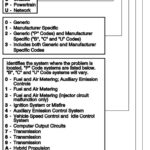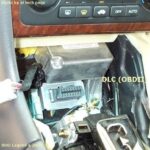OBD2 scanners and diagnostic tools both interface with a car’s onboard computer to identify problems. But what’s the difference, and which one is right for you? This article breaks down the key differences between OBD2 scanners and diagnostic tools to help you make an informed decision.
:max_bytes(150000):strip_icc()/Code-Reader-vs-Scan-Tool-c816f6c835d549e699c571a291671c4e.jpg)
Core Functionality: Reading and Clearing Codes
Both OBD2 scanners and diagnostic tools can read and clear trouble codes, which are stored in your car’s computer when a problem is detected. This allows you to reset the check engine light. However, the depth of their capabilities varies significantly.
OBD2 Scanners: Basic Code Reading and Clearing
OBD2 scanners are designed for basic code reading and clearing. They can:
- Read and display trouble codes.
- Clear trouble codes and reset the check engine light.
- Sometimes display basic live data like engine RPM.
Some more advanced (and expensive) OBD2 scanners can also:
- Display trouble code definitions.
- Read freeze frame data (a snapshot of the engine’s conditions when the code was set).
- Access limited Parameter IDs (PIDs) for specific data points.
Diagnostic Tools: In-Depth Analysis and Troubleshooting
Diagnostic tools offer much more than simple code reading. They provide advanced features for in-depth analysis and troubleshooting, including:
- Reading and clearing generic and manufacturer-specific codes.
- Providing detailed trouble code definitions and possible causes.
- Recording and playing back live data streams from various sensors.
- Graphing data for visual analysis.
- Accessing a wide range of PIDs for comprehensive data monitoring.
- Performing advanced diagnostic tests, such as actuator activations.
Some high-end diagnostic tools even include:
- Built-in oscilloscopes and multimeters for electrical testing.
- Programming and coding capabilities for certain vehicle modules.
- Access to repair information and technical service bulletins.
:max_bytes(150000):strip_icc()/Code-Reader-vs-Scan-Tool-c816f6c835d549e699c571a291671c4e.jpg)
Cost Comparison: Affordability vs. Investment
OBD2 scanners are generally affordable, ranging from under $20 to a few hundred dollars. Diagnostic tools, with their advanced features, can cost hundreds or even thousands of dollars.
Who Needs What? Matching the Tool to the User
- Casual Car Owners: For basic check engine light diagnostics and code clearing, an affordable OBD2 scanner is usually sufficient. Many auto parts stores also offer free code reading services.
- DIY Enthusiasts: Those who enjoy working on their own cars and want more data for troubleshooting may benefit from a more advanced OBD2 scanner or an entry-level diagnostic tool.
- Professional Technicians: Professional mechanics require the comprehensive capabilities of a high-end diagnostic tool to diagnose complex problems efficiently. Features like bidirectional communication, oscilloscope functions, and access to repair databases are essential for their work.
ELM327 Scan Tools: A Budget-Friendly Alternative
ELM327 scan tools offer a middle ground. These small devices connect to your car’s OBD2 port and communicate with a smartphone, tablet, or laptop via Bluetooth or Wi-Fi. Using dedicated software, they can perform functions ranging from basic code reading to advanced diagnostics, often at a lower cost than standalone diagnostic tools.
Choosing the Right Tool for Your Needs
The best choice between an OBD2 scanner and a diagnostic tool depends on your individual needs and budget. If you just need to read and clear codes occasionally, an OBD2 scanner is a cost-effective solution. If you’re a serious DIYer or a professional technician, a diagnostic tool’s advanced capabilities are invaluable. Consider your usage requirements and technical skills to make the right decision. For many car owners, a simple code reader and a quick internet search will suffice.


